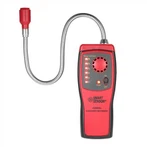Choosing Accuracy Levels for Sound Level Meters and Noise Monitoring Instruments
In the old standard for sound level meters, sound level meters were classified into accuracy levels of 0, 1, 2, and 3. The new sound level meter standard divides sound level meters into accuracy levels 1 and 2, which are equivalent to the old Type 1 and Type 2, and no longer have Type 0 and Type 3. In China's environmental monitoring system, Type 2 (referred to as Level 2 in the new standard) environmental noise measuring instruments are commonly used, because the relevant national standards for environmental noise measurement stipulate the use of Type 2 or above instruments. More than thirty years ago, when formulating national standards, the main considerations were the scarcity of Type 1 instruments and economic factors. But the situation has changed significantly now, with a large number of Level 1 monitoring instruments emerging. Economically, Level 1 instruments are not much more expensive than Level 2 instruments, generally around 30% to 50% more expensive. The performance of level 1 instruments is much better than that of level 2 instruments. For example, in terms of accuracy, we cannot simply assume that level 1 is 0.7dB (excluding measurement uncertainty, the same below) and level 2 is 1.0dB, with a difference of only 0.3dB. This indicator is the error under specific conditions, that is, the accuracy under strictly defined conditions such as reference environmental conditions (temperature+23 ℃, relative humidity 50%, atmospheric pressure 101.325kPa), reference level range (e.g. 40-110), reference sound pressure level (e.g. 94dB), reference frequency (e.g. 1000Hz), reference sound incidence direction (e.g. 0 ° incidence), etc. In actual measurement, this condition is certainly not the case, and when any of these conditions change, the error caused by level 2 instruments is greater than that of level 1 instruments, and the overall error difference between the two may be over 1.0dB.
In addition, in the new standard for sound level meters, it is required that the working temperature range of level 1 sound level meters is -10 ℃~+50 ℃, and the sensitivity change relative to the reference temperature within this temperature range should not exceed ± 0.5dB; The working temperature range of the level 2 sound level meter is 0 ℃~+40 ℃, and the sensitivity change relative to the reference temperature within this temperature range is not greater than ± 1.0dB. Due to the fact that most environmental noise monitoring instruments are used on-site and the environmental conditions vary greatly, it is evident that level 1 instruments are better suited to meet the requirements of environmental noise measurement. In China's relevant product noise measurement standards and occupational noise pollution measurement standards, it is generally stipulated to use Type 1 noise measuring instruments, while more developed countries abroad no longer produce Level 2 instruments. Therefore, units with conditions should try to use level 1 instruments as much as possible. It is suggested that in the future, when formulating national standards for environmental noise, it is required to use level 1 instruments or at least recommend prioritizing the use of level 1 instruments. I believe that with the promotion and application of level 1 environmental noise measurement instruments, it will greatly promote the improvement of China's environmental noise monitoring level.






